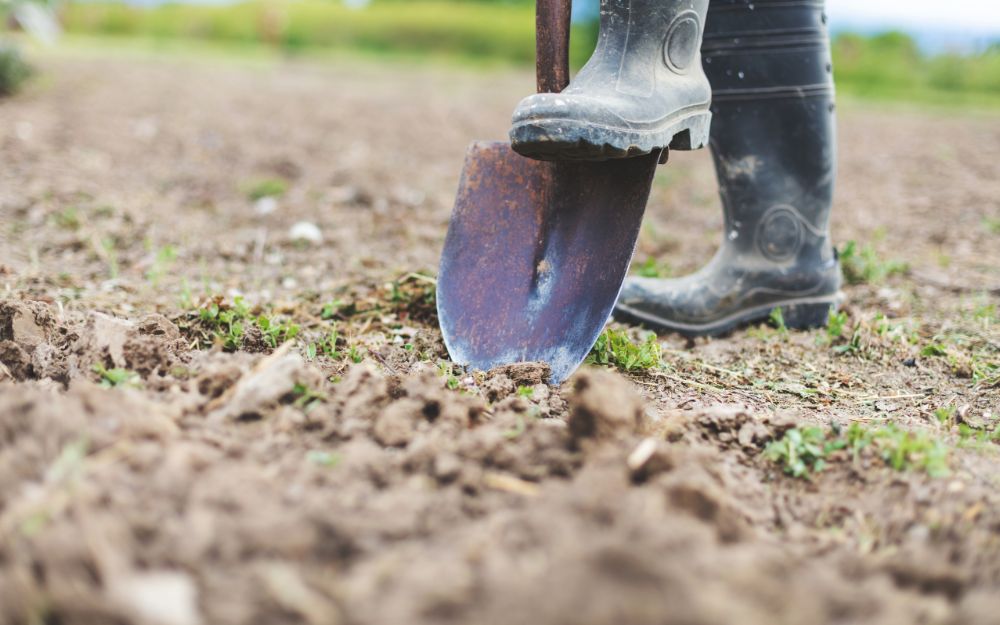Carbon farming is about a change in your land management to either:
- avoid or abate the emissions of greenhouse gases from your activities; or
- increase the storage of carbon in trees or soil.
How do you earn soil carbon credits?
Starting a soil carbon project involves measuring the amount of carbon in the soil to establish a base line. A survey involving core samples and satellite imagery will be undertaken to obtain those necessary data.
The Project Proponent then needs to change practices to promote more carbon storage in the soil. Carbon is measured as tonnes of carbon per hectare and traded as Australian Carbon Credit Units (ACCUs).
A second measurement is taken five years later with ACCUs issued for any equivalent increase in carbon. The Project Proponent must keep that carbon in the soil for 25 years or hand the ACCU back.
Project Proponents need to demonstrate that their activities have resulted in the carbon increase and that the increase in carbon would not have happened had things progressed under a “business as usual” management system.
Emissions Reduction Fund methods
Activities within carbon farming fall into two broad groups:
- emissions avoidance; or
- carbon sequestration.
In practice, some methods may involve a bit of both. The key is that, to earn Australian Carbon Credit Units, a proponent must use a method that is registered and recognised as being available for use under the Emissions Reduction Fund. Those methods fall into three broad classes that are eligible for Land Restoration Fund (LRF) projects. They are:
- agricultural methods;
- vegetation methods; and
- savanna burning methods.
Agricultural methods are about changes in the management of your beef herd or your cropping system to reduce the amount of nitrous oxide or methane that these systems would otherwise emit to the atmosphere. Agricultural methods can also involve a change in the way you manage your pasture or soil to increase the storage of carbon in your soil.
Vegetation methods involve regrowing native vegetation. These are:
- human-induced regeneration of native forests which, for example, can be achieved through a change in grazing management or a cessation of clearing practices; or
- direct planting of native species in what are called “Environmental Planting” projects.
Savanna burning methods aim to reduce the impact of really hot fires that commonly occur in the late dry season in the tropics. Those hot fires release high levels of methane and nitrous oxide and consume more of the fuel than cooler fires that are lit earlier in the dry season.
Which method?
Deciding which method is suitable for you requires independent advice and consideration of how it fits within your enterprise. You can use tools such as CSIRO’s LOOC-C to get a sense of the ACCUs you can earn through a particular method. Before committing to a project, you should also speak with your financial and legal advisers, and carbon farming experts to gain a proper understanding what is required and the implications of undertaking carbon farming activities.
Australian Carbon Credit Unit (ACCU)
An Australian Carbon Credit Unit represents one tonne of carbon dioxide equivalent greenhouse gas which, as a result of the carbon farming activities, are avoided by not being emitted to the atmosphere, or which are taken or captured from the atmosphere and stored in vegetation or soil as carbon sinks.
An ACCU is a financial product that can be earned through carbon farming projects registered with the Clean Energy Regulator. Once issued by the Clean Energy Regulator, an ACCU can be held and traded in much the same way as you would invest and trade shares on the Australian Stock Exchange. ACCUs can be sold directly to the Commonwealth Government, or traded on the Land Restoration Fund, or the broader secondary market.
The number of ACCUs that you may be able to generate on your property depends on the method used, as well as where you are and what has happened on that land in the past.
The number of ACCUs you generate per unit area per year can change over time. For example, over the life of a forest, carbon capture and sequestration will generate few ACCUs when the trees are very young but will increase year by year as the forest matures before dropping off again as the trees reach senescence or die.
Thinking about the financial impact of a carbon farming project requires more than just thinking about the ACCUs.. You must consider not only the cost of implementing the land management activities, but also the cost of monitoring and reporting required to verify the carbon and co-benefit outcomes for the LRF.
Opportunity costs must also be considered. Where forest is reintroduced to grazing land, there is likely to be a corresponding impact on the future grazing potential of that land. Carbon farming projects are long-term projects with far reaching effects on any commercial venture. Accordingly, financial and taxation advice is essential.
Emerging methods
Although there has been a perception in the community that Carbon Offset projects must involve “locking up trees”, there are several different methods already available and it appears likely that advances in this field will present more opportunities to landholders to reduce methane emissions.
Research by the CSIRO, Meat and Livestock Australia and James Cook University, into asparagopsis, a native Australian seaweed, has led to the commercialisation of a feed additive, called FutureFeed, which, when fed to cattle in feedlots, is touted to reduce methane emissions by ’90 to 95 percent”.
Research suggests that very little additive is required to drastically reduce the emissions from livestock.
Ruminants including cows, sheep and goats produce methane though digestion, which according to the CSIRO, is responsible for about 10 percent of Australia’s total greenhouse gas emissions.
The asparagopsis as a feed additive was patented by FutureFeed in 2020 and production was rapidly scaled up. FutureFeed is an off shoot of the government owned CSIRO with private backing from Woolworths Group, GrainCorp, Harvest Road and Sparklabs Cultiv8.
Managing how much asparagopsis an animal consumes is difficult outside a feedlot setting, which has posed some practical problems in measuring and attributing reductions in methane emissions to the additive in extensive grazing operations.
FutureFeed and its partners have submitted proposals to the Emissions Reduction Fund in an effort to have practices using their product, asparagopsis, recognised as an approved method.
Also, the Commonwealth government committed to funding three research projects aimed at reducing methane emissions from livestock, via its $29 million Methane Emissions Reduction in Livestock (MERiL) program.
That funding will enable trials on the effectiveness of methane-reducing feed supplements on grazing livestock – varying from supplements given to pregnant cows to reduce the emissions of their offspring, to trials using automated in-paddock feeders.
Advice
It is recommended that you obtain financial and legal advice, as well as carbon farming advice, when you are considering entering into the carbon farming industry.
Our firm’s Clarrisa Moore is an Approved Adviser with the Land Restoration Fund. Contact Clarrisa on (07) 4936 9100 or at cmoore@southgeldard.com.au
Other general information
Please see our other articles about:
- An Overview of Queensland’s Carbon Farming Initiatives for Landholders
- Carbon rights on State Land – Leasehold property.
- The Carbon Farming Advice Scheme
It is important to seek specific advice regarding your circumstances as this fact sheet provides general information only and does not constitute legal advice. This article is current as at July 2023.


